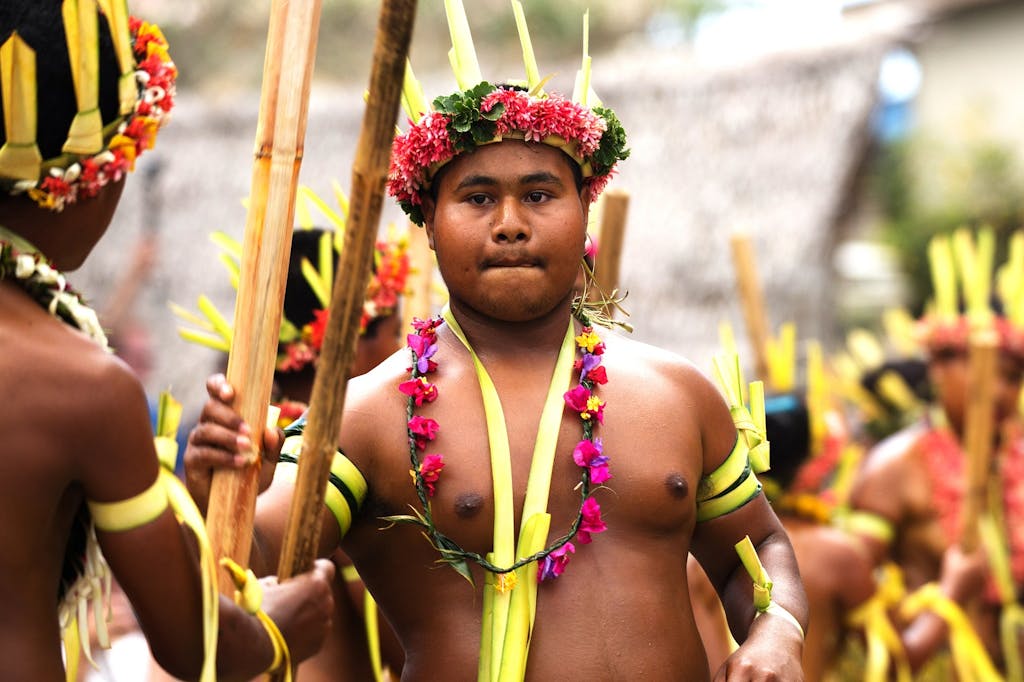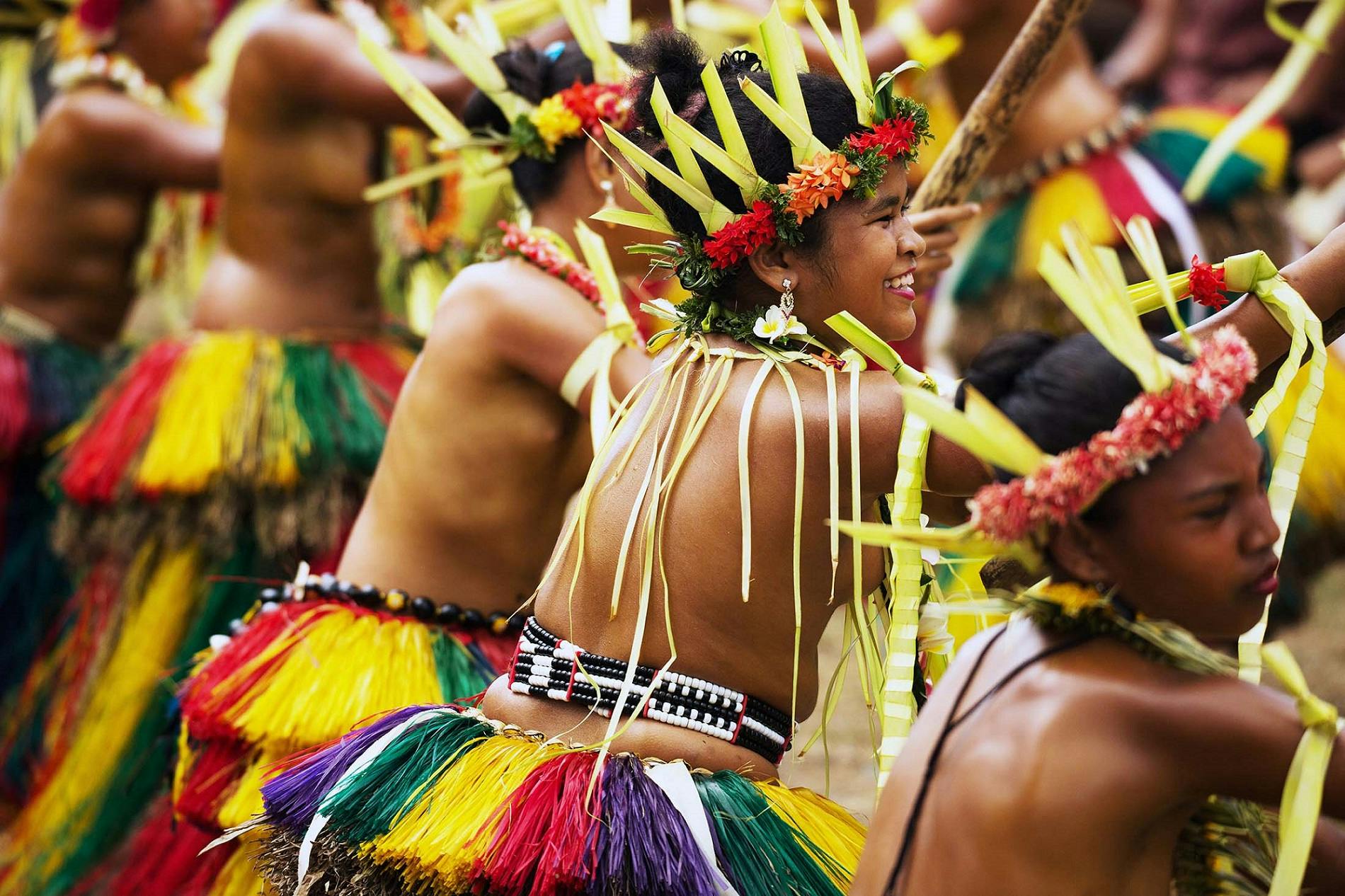Highlighting the Ceremonial Dancing of the Yapese People on Micronesia
A remote speck in the Federated States of Micronesia, Yap Island lies about 500 miles southwest of Guam and 300 miles northeast of Palau in the Pacific Ocean. Home to the Yapese people — a Micronesian ethnic group that has been influenced over the centuries by Spain, Japan, Germany and the United States — the island is so remote that only 4,000 visitors reach its shores each year. The destination exudes character, with a rich culture that is showcased at communal gatherings.
Expedition filmmaker Denis Elterman, a member of Silversea’s onboard photography team, has been among that small population of adventurous travelers. He counts his trip to Yap Island as being among his most memorable with Silversea and cites a rare display of Micronesian culture as a standout experience from his visit.
Dancing, a means of storytelling
On Yap Island, dancing takes on a ritualistic role among the region’s indigenous communities. In Colonia, Denis — along with Silversea’s guests — admired a ceremonial dance and then captured the spellbinding moment on film. Dancing has great symbolic value within a culture, Elterman says, as well as being a “mesmerizing spectacle of swirling colors, trance-inducing chants and visual storytelling.”
“After a Zodiac cruising ride from the ship and a 10-minute walk into the village, we were gathered in the heart of the community, with thatched houses surrounding us and towering palm trees beyond that,” he continues. “The scene was awash in vibrant colors: yellows, reds, greens and blues. The dancers lined up, facing each other, dressed in multi-colored grass dresses, and began singing in time with their movements. Opposing pairs would beat long wooden sticks against each other, as the dance — or churu — commenced to the delight of onlookers.”

Traditional Yapese dress
“The most captivating part of the Yapese dance is, without doubt, the traditional dress — it’s absolutely phenomenal,” says Elterman, recalling the first moment he saw Yapese dancers. “It’s very colorful and made entirely from natural materials. The performers wore intricately woven grass dresses with vibrant details, hand-sewn beads, jewelry and hair bands. The attention to detail is superb, with each strand of grass individually dyed and stitched.”
Yap Island has a population of just over 11,000, including a diminishing number of Yapese people who wear this traditional dress at all times. “Yap women traditionally wear grass skirts […] that are usually made out of various kinds of plants,” says Don Evans, the General Manager of Yap Island’s visitors bureau and a longtime resident of the island. “And the pedestrian or every-day grass skirt is really like a moving haystack — brown and so on — but they don brightly-colored skirts made out of hibiscus fiber for ceremonies and for dances […]. Boys and men usually wear loincloths […]. The layers of this loincloth are dependent on age. A young boy would just wear […] one loincloth, and as they get older colors are added — usually red, white and blue colors. A man about 30 would have the full regalia, and then when you reach a certain age […] you can start taking some of those loincloths off.”

Myths and legends of Yapese culture
Elterman was entranced by the visual narration of local legends. According to Visit Yap, the island’s visitor bureau, song and dance have long been utilized as a means of oral storytelling on Yap Island. In particular, legend and myth are passed between generations, with movements and sounds conveying often fantastical tales. Among others, popular legends in Yapese culture include:
- The Legend of the Lizard-Man of Dugor: the story of a shape-shifting lizard who was brought to justice by a resident of the village of Dugor.
- The Legend of the Sea Serpent: the tale of a feared sea serpent who cause the division of Yap Island and was eventually overcome by a brave boy named Sigon.
- The Turtle-Rat-Bird legend: an account of a rat and a bird who decide to embark upon a journey together.
Elterman highlights the engaging role of legend within the ceremonial dance: “The dancers bring history to life through their interpretations of local myths,” says Elterman. “It’s a way of storytelling that we are not accustomed to, but song and dance offer travelers a unique insight into the Yapese culture. Legend plays a central role within this culture: when I witnessed the dance, I understood that this form of oral communication bonds the community with moralistic takeaways, as part of a celebration of Yap Island’s heritage. Many children were also involved in the dance, in what seemed to be a display of reverence to the community’s elders.”

Capturing the moment
“Filming with my Canon 5d MkIII, I wanted to maintain a respectful distance from the performers throughout, so I used my Canon 100-400mm f/4.5-5.6L IS II USM lens and stood back slightly. I recorded in a single take to capture the whole dance with the music, moving around the circle of spectators to find new angles and new details. I focused on portrait photography and facial expressions, the colorful attire as it flowed with the dance, and the dancers’ unique movements. From the dancers’ feet to their dresses, their arms and their faces, I was intent to take everything in.”

“I am lucky enough to have experienced many ceremonial dances like this throughout the South Pacific Islands, in Micronesia and Polynesia — and each is unique and captivating in its own right. But this ceremonial dance on Yap Island was special because of the way in which the dancers were so synchronized, their remarkable attire and their song. This was an especially powerful moment thanks to the way that the performers moved in time, evoking strong feelings of awe within the audience. I had a real sense of gratification in that moment as a traveler — on this remote island in the Pacific Ocean, I learned more about humanity and human connection than I had in a long time.”
Ready to explore the South Pacific — and learn more about other cultures, like that of the Yapese people? Start by browsing Silversea Expedition Cruises to French Polynesia.
